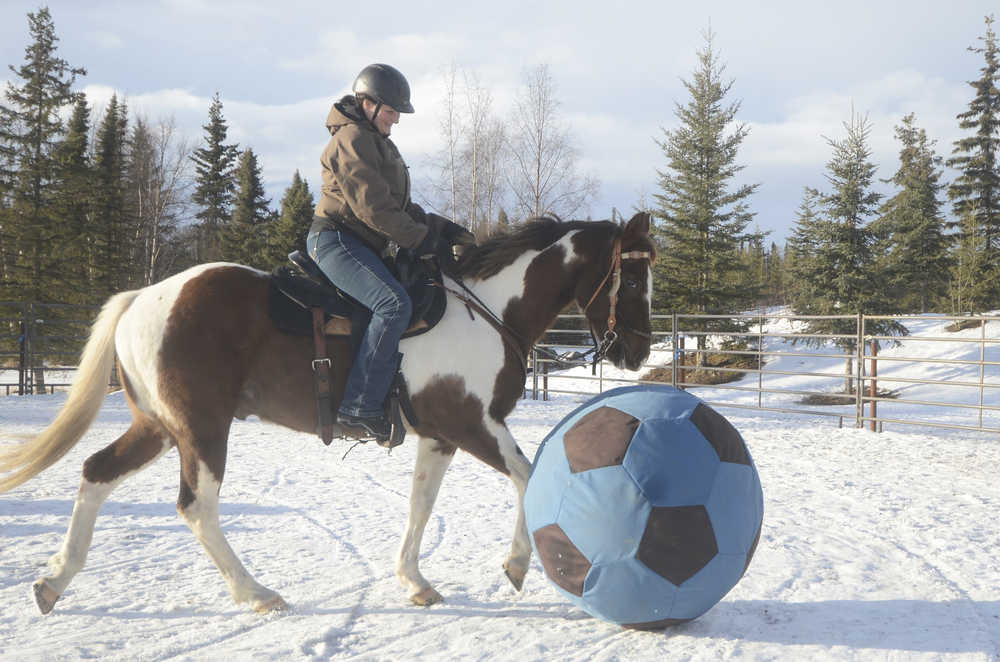The Kenai Peninsula has been plagued this winter by a constant pattern of freezing and thawing. While the icy roads this produces may be a nuisance to motorists and those trying to do any form of outdoor recreation, it presents a unique challenge to members of the peninsula’s equestrian community.
Connie Green, a homesteader from Soldotna who owns Alaska C&C Horse Adventures, has nine horses and is currently boarding another two. Her ranch is a place where kids and teens can come to hone their existing riding skills or learn the basics of caring for the animals.
The ice that forms due to constant snowmelt, rain and refreeze presents a challenge for Green when it comes to exercising her horses and finding places to take her young riders on outings during winter months.
“We’re always trying to venture off to find a place to ride the horses,” Green said.
This winter, Green said the area beaches have proved the easiest to navigate on good-weather days when other trails or areas of the peninsula are iced over. The softer sand is better for the hoses’ feet and tendons, and they enjoy being able to roll around in it, she said.
Green uses a soil conditioner to break up the ice on her property so her horses can safely move around. The Bobcat attachment normally used to break down organic matter and ready soil for planting is helpful for grinding up solid stretches of ice and packed snow, she said. Green can spend a few hours on the machine when she breaks up the ice, she said.
“Every day it’s — pretty much it starts all over again,” Green said of the melting and freezing weather. “I do as much as I can with that.”
While machinery can be expensive, it can be preferable for mitigating icy conditions compared to sand, Green said.
“One thing you don’t want to put down around their feeding area is sand,” she said, adding that ingestion of sand can lead to colic, which can be fatal. “If the horses have a lot of sand in their food it will lodge down in the bottom of their stomach.”
Green also uses special horseshoes that allow her animals to navigate ice more safely. A pair of winter horse shoes runs about $200, she said, and shoes generally last about eight weeks.
Add that to the cost of heating water, feeding the horses more hay and using blankets that run about $150 each, and maintaining 11 horses for a winter becomes pricey. Especially cold winters are not ideal either, as lower temperatures drive up the amount of hay the horses need and the amount their water needs to be heated, she said.
One amenity that would help equine enthusiasts get out to train and have fun during frozen months is an indoor arena. They are common in Anchorage, Fairbanks and the Matanuska-Susitna Valley, but the few indoor arenas that do exist on the peninsula are private Green said. A public indoor horse arena that could be used by the peninsula’s entire equestrian community would be a boon, she said.
“I think people would definitely not close those horses up for a … seven-month period,” Green said, adding that it is not an uncommon practice during winter. “It would add so much to getting the people back out and doing physical things together.”
Green has her horses and riders participate in as many games and exercises as possible on her ranch, from the horses pulling kids on sleds and tubes to horse-sized soccer. Green said she would love to get enough interest in games to have multiple horses and owners involved, and that an indoor arena could help that.
Reach Megan Pacer at megan.pacer@peninsulaclarion.com.

